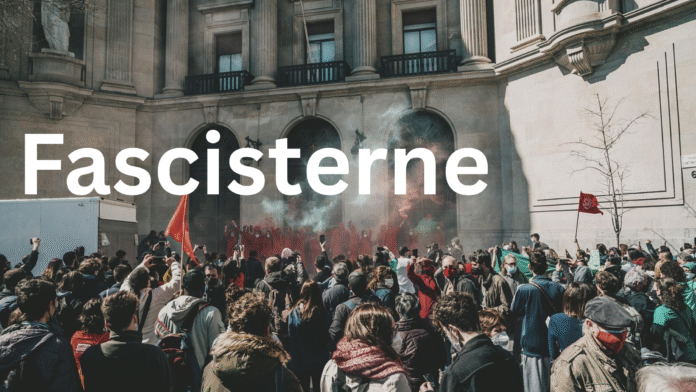Introduction to Fascism and its History
Fascism is a term that often stirs up intense emotions and heated debates. Its roots run deep in history, leaving a complex legacy that continues to influence societies today. As we navigate an increasingly polarized world, understanding fascism becomes more critical than ever. It’s not just a relic of the past; its ideologies can still be found lurking in modern political movements.
This blog dives into the essence of fascism—its rise across Europe, its defining characteristics, and some notorious regimes that embraced this ideology. We’ll also explore how it has shaped society and politics over time while debunking common myths surrounding it. We’ll look at ways to combat these ideas as they resurface in contemporary discussions.
Join us on this journey through history and thought as we unravel the complexities behind fascisterne.
The Rise of Fascism in Europe
The rise of fascism in Europe emerged during the tumultuous aftermath of World War I. Economic instability and social unrest created fertile ground for extremist ideologies.
In Italy, Benito Mussolini capitalized on national disillusionment. His promises to restore national pride resonated deeply with a populace seeking direction. The Blackshirts, his paramilitary forces, silenced opposition through intimidation.
Simultaneously, Germany faced its own challenges. The Treaty of Versailles left deep scars and economic turmoil fueled resentment. Adolf Hitler’s Nazi Party exploited these grievances, promising revival and unity while promoting an exclusionary vision.
Across Europe, countries grappled with similar conditions—rising unemployment and political fragmentation bred vulnerability to radical ideas. Fascist movements gained traction by portraying themselves as saviors amidst chaos.
This unsettling convergence marked a pivotal shift in political landscapes across the continent. As nations slipped into authoritarianism, democratic ideals began to erode under pressure from aggressive nationalist rhetoric.
Key Characteristics of Fascism
Fascism is marked by a strong, centralized authority. This often manifests in a dictatorial power structure where dissent is not tolerated. The state becomes paramount, with individual rights secondary to national interests.
Another notable characteristic is militarism. Fascist regimes glorify the military and emphasize aggressive nationalism. They often promote the idea of expanding territory or influence through force.
Propaganda plays a crucial role too. A fascist government uses media to shape public perception and rally support for its ideology, fostering an unwavering loyalty among citizens.
Additionally, there’s a disdain for political pluralism and democracy. Fascists believe that only one party should dominate, eradicating any competition as they seek total control over society.
Scapegoating minority groups is common practice. Blaming others for societal problems serves to unify followers against perceived enemies while diverting attention from internal issues.
Examples of Fascist Regimes
Fascism has manifested in various countries with distinct characteristics. One of the most notorious examples is Benito Mussolini’s Italy. His regime emphasized aggressive nationalism and sought to create a totalitarian state.
Nazi Germany, led by Adolf Hitler, represents another extreme case. The combination of fascist ideology and racial supremacy had devastating effects during World War II.
Spain also witnessed a fascist regime under Francisco Franco. His rule was marked by civil conflict, repression, and an emphasis on traditional values.
In South America, Argentina experienced Peronism under Juan Domingo Perón. While it carried some unique traits, its authoritarian tendencies echoed classic fascist principles.
These regimes share common threads: suppression of dissent, promotion of militarism, and strict control over society’s cultural aspects. Each example illustrates how fascism adapts to different contexts while maintaining its core tenets.
Impact of Fascism on Society and Politics
Fascism reshaped societies in profound ways. It cultivated a culture of fear, suppressing dissent and promoting conformity. Through propaganda, it manipulated public perception, creating an illusion of unity while enforcing division.
Economically, fascist regimes often emphasized state control over industries. This led to short-term gains but stifled innovation and personal freedoms in the long run. The focus on militarization diverted resources from essential social services.
Socially, traditional values were amplified to create a homogeneous identity. Minorities frequently faced persecution or exclusion as nationalistic ideals took precedence over human rights.
The political landscape changed dramatically under fascism’s influence. Democratic institutions weakened or disappeared entirely as power consolidated into authoritarian hands. This shift not only challenged existing governance structures but also left lasting scars on civil liberties that would take generations to heal.
Debunking Common Myths about Fascism
Fascism is often misunderstood. Many believe it’s solely about extreme nationalism, but it encompasses a complex web of ideologies.
Another common myth is that fascist regimes only emerge during economic crises. While instability can breed such movements, they also thrive in seemingly stable societies.
Some think fascists are purely racist and xenophobic. Yet, many fascist leaders use propaganda to manipulate public sentiment for their gain without the core ideology being rooted in racial hatred alone.
People may assume all authoritarian governments are fascist. However, not every dictatorship fits this mold; some lack key characteristics like militarism or totalitarian control over daily life.
There’s a belief that fascism is entirely dead post-World War II. In reality, its echoes persist today through far-right groups worldwide. Understanding these myths helps illuminate the ongoing relevance of studying “fascisterne.”
Combating Fascist Ideology in Modern Times
Combating fascist ideology today requires vigilance and proactive measures. It’s essential to foster open dialogues about history, society, and human rights. Education plays a critical role in this process.
Modern technology also offers tools for advocacy against hate speech. Social media platforms can be used to spread awareness and counter misinformation effectively. Grassroots movements have emerged globally, uniting people against extremist views.
By promoting inclusivity and understanding, communities can create safe spaces for marginalized voices. Engaging youth in discussions helps build resilience against radicalization.
Art and culture are powerful allies too. They can challenge oppressive narratives while celebrating diversity.
Holding leaders accountable is crucial. Political rhetoric that normalizes hate must be confronted with unwavering determination from citizens committed to justice and equality.
Conclusion: Lessons Learned from the Past and Moving Forward
The lessons learned from the rise and fall of fascisterne are both profound and crucial for today’s society. History teaches us about the dangers of allowing extremist ideologies to take root. The totalitarian regimes that once thrived on nationalism, suppression, and fear remind us of the fragility of democracy.
As we navigate our current political landscape, it is essential to foster open dialogue and inclusivity. Awareness is key in identifying the signs of radicalization before they escalate into broader societal issues. Education plays a vital role in this process; understanding history can equip individuals with the tools needed to combat divisive narratives.
Moreover, engaging in community-building activities encourages solidarity among diverse groups. This not only strengthens social cohesion but also actively counters hate-driven ideologies like fascism.
We have an opportunity to create a world where respect for human rights prevails over repression. By learning from past mistakes, we can ensure that the horrors experienced under fascisterne never repeat themselves again. Moving forward requires vigilance, empathy, and a commitment to upholding democratic values for generations to come.


